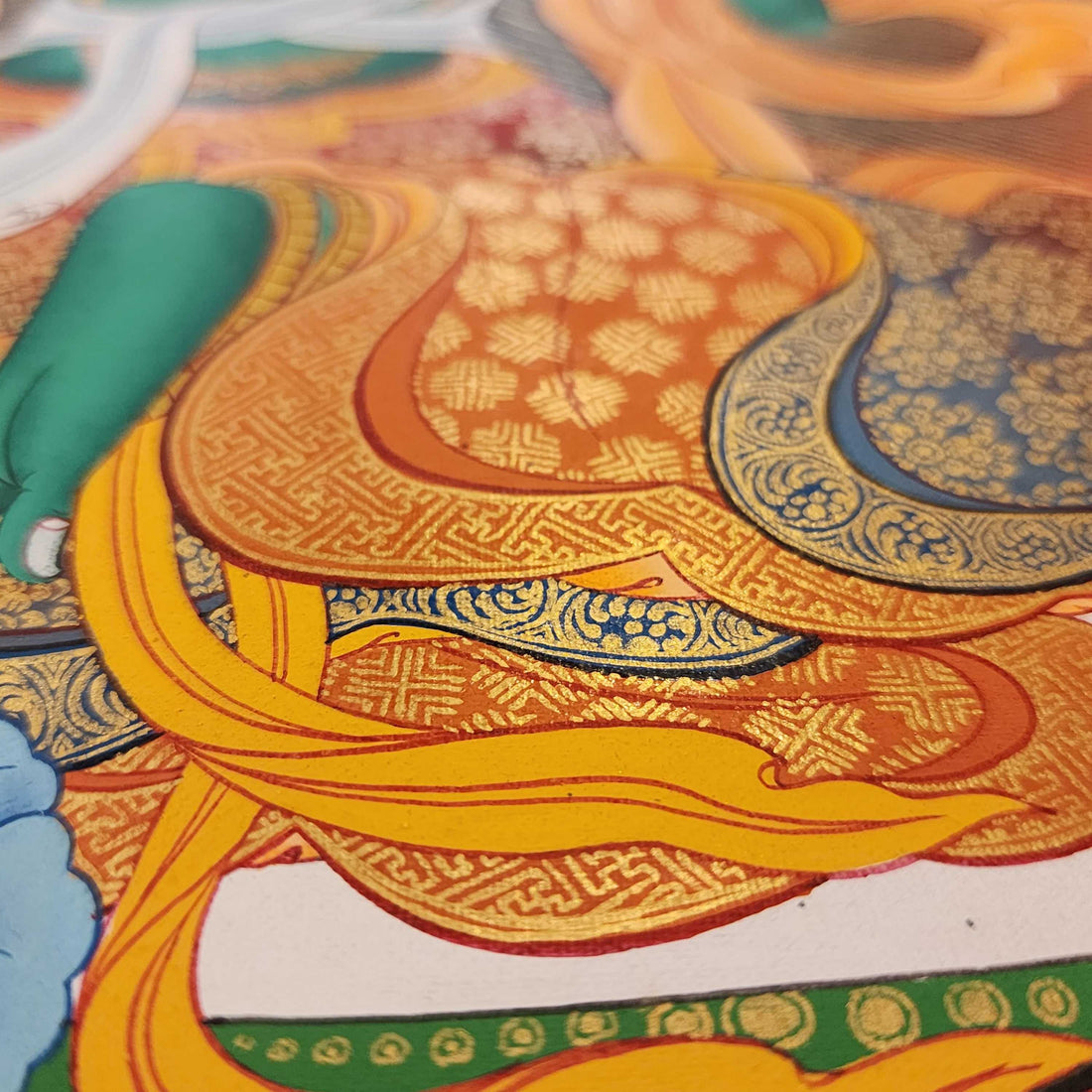
Collector’s Guide to Authentic Thangkas: What to Look For
Share
Introduction
Buying a Thangka is not just acquiring art. It’s preserving a sacred tradition. With increasing reproductions in the market, understanding how to identify an authentic Thangka is essential for collectors and practitioners.
Hand-Painted vs. Printed Thangkas
— Hand-Painted: Brush strokes and layered pigments visible; slight imperfections indicate authenticity.
— Printed: Flat, uniform colors with no texture; often mass-produced.
Use of Natural Pigments
— Traditional Thangkas use mineral pigments, gold, and organic dyes.
— Colors appear deep, vibrant, and naturally aged over time.
Iconographic Accuracy
— Authentic Thangkas follow strict proportions based on Buddhist texts.
— Deities, mandalas, and symbols are carefully measured for spiritual accuracy.
Quality of Detailing
— Fine lines, gold outlines, and precise ornamentation indicate skilled craftsmanship.
— Look for delicate work around faces, hands, and sacred symbols.
Certification & Provenance
— Ask for information about the artist, region of origin, and materials used.
— Some Thangkas are blessed or consecrated, adding spiritual value.
Conclusion
An authentic Thangka is a treasure of art and spirituality. Learning how to identify one ensures that you invest in genuine sacred art and honor the lineage of its creation.
